On View
10 Extraordinary Artworks You Need to Travel to the Edge of the World to See
Here are some works of art that you won't see every day.
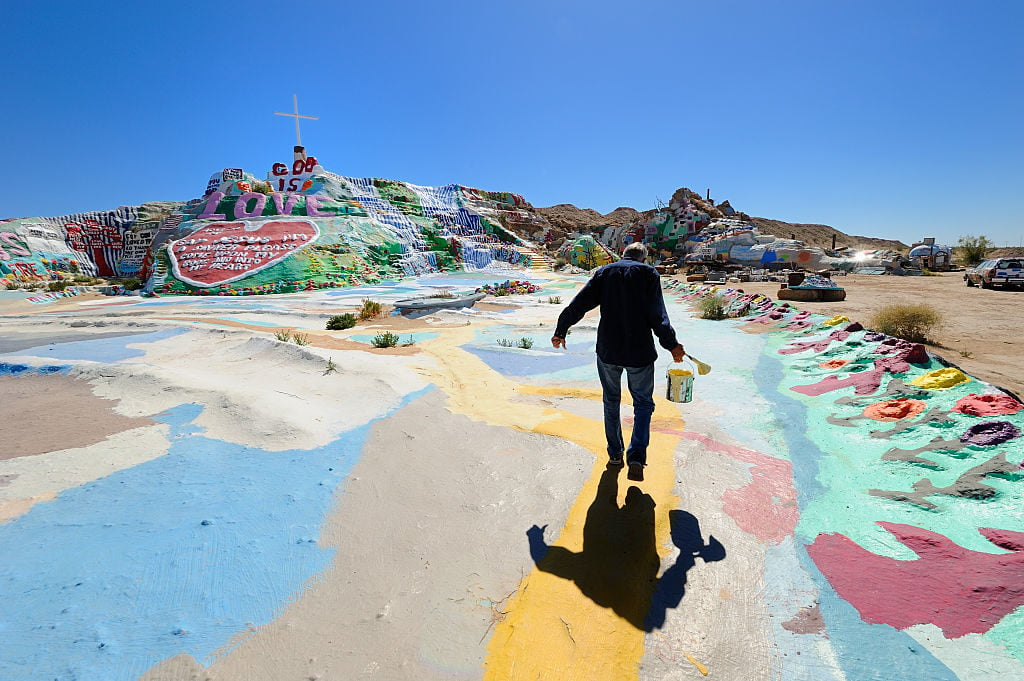
Here are some works of art that you won't see every day.

Artnet News

New York. London. Paris. Public art tends to cluster in major cities around the world, taking center stage in downtown districts and in major institutions. But a lot of truly incredible art exists on the fringes, and some of it is even made by major artists. For a truly unique experience, you’ve got look off the beaten path, away from museums and towards the oceanfronts, mountains, and remote highways of the world. You never know what could astound you.
From the northern tip of Norway to the wilderness of the Namib Desert, we rounded up 10 major works of public art that are hiding in plain sight in some of the most remote corners of the world.
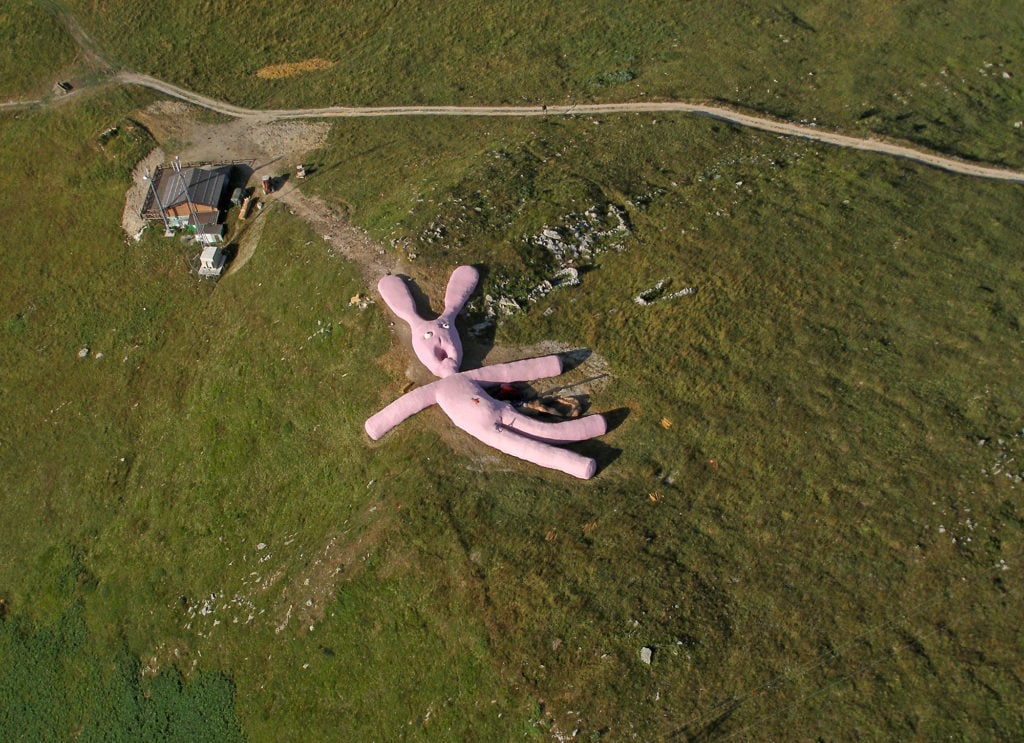
Gelatin, Rabbit (2005). © Gelatin / Courtesy Galerie Meyer Kainer, Vienna.
WHAT: This is a 70 meter (230 foot) pink rabbit in rural Italy. Literally. The work is by the ever-irreverent Viennese art collective Gelatin, and is knitted and expected to decompose by 2025 (the year the work will be complete, according to the group). If their project statement is any indication, they’ve figured out a perfect way to make serendipity into an art: “The things one finds wandering in a landscape: familiar things and utterly unknown, like a flower one has never seen before, or, as Columbus discovered, an inexplicable continent; and then, behind a hill, as if knitted by giant grandmothers, lies this vast rabbit, to make you feel as small as a daisy.”
WHERE: This curious sculpture is about an half hour walk north of the village of Artesina, Piemont, in the Italian Alps.
FUN FACT: Gelatin has documented Rabbit over the years, charting its decomposition. As of a few years ago, it had completely lost its pink color and looked like mounds of fabrics, with only the outline appearing recognizable.
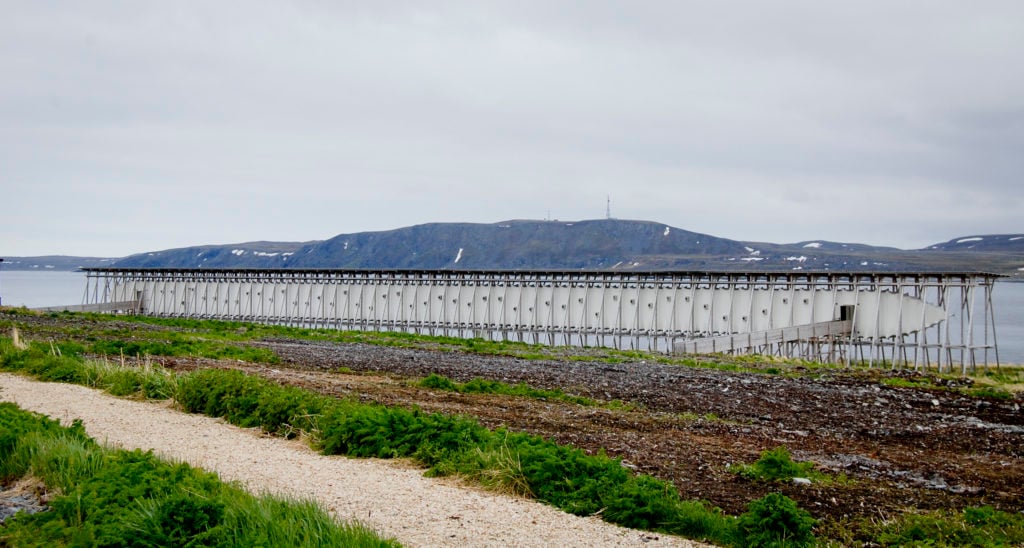
Louise Bourgeois and Peter Zumthor’s Steilneset Memorial (2011). Photo: Pierre-Henry Deshayes/AFP/Getty Images.
WHAT: This memorial holds the last artwork that French-American artist Louise Bourgeois made before she died in 2010. It commemorates the 17th-century Vardø witch trials, which resulted in 77 women and 14 men being burned at the stake in this northern Norwegian town. The area saw the highest rate of accusations in the country. Bourgeois collaborated with Pritzker Prize-winning Swiss architect Peter Zumthor for the work, and her contribution in the interior of the building, called The Damned, The Possessed and The Beloved, contains an eternal flame burning on the seat of a chair that looks out over the ocean. The 125 meter (410 foot) corridor of Zumthor’s main building is lit by 91 tiny windows, one for each of the victims.
WHERE: Vardø is in the extreme northeast of Norway. You can fly from Olso to Kirkenes, and from there, it’s a scenic two hour drive.
FUN FACT: Bourgeois complained that Zumthor’s initial design left no room for her work, so she insisted he create a separate structure to house her eternal flames.
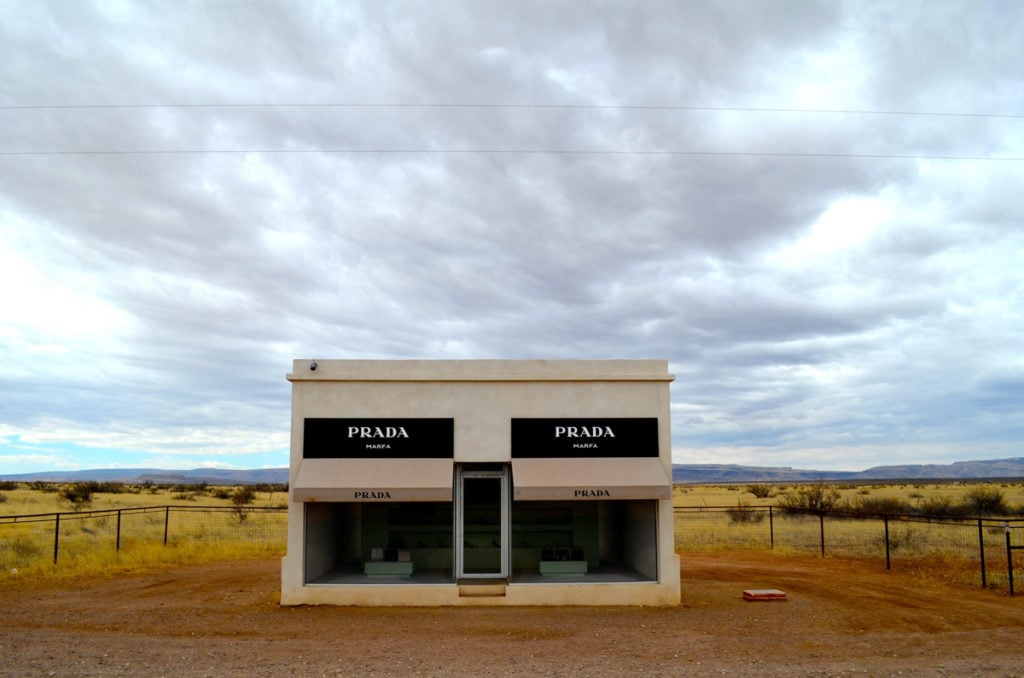
Elmgreen & Dragset, Prada Marfa (2005). Photo: Courtesy of Veronique DUPONT/AFP/Getty Images.
WHAT: Elmgreen & Draget’s misplaced Prada outlet stands quietly against a desert backdrop. The duo made their permanent installation, which they have called a “pop architectural land art project,” out of adobe bricks, which are quintessential elements in local Texan architecture. The store is never empty—Miuccia Prada provided shoes and handbags from her fall/winter 2005 collection to supply the shop windows—but it’s also never open (sorry, fashionistas).
WHERE: This work is truly in the middle of nowhere. Head out along US Route 90 and you will come across this sculpture just northwest of Valentine, Texas.
FUN FACT: The artists originally planned to create Prada Nevada until someone suggested Texas instead. The rest is history—including the work’s guest appearance on The Simpsons this past January.

Max Siedentopf, Toto Forever (2019), a installation playing Toto’s 1982 song “Africa” on an endless loop. Photo courtesy of Max Siedentopf.
WHAT: Artist Max Siedentopf, who grew up in Namibia, has installed a set of six speakers and a solar-powered MP3 player in a remote location in the Namib Desert. The speakers blast the 1982 pop hit Africa by Toto on an endless loop. Siedentopf says the endeavor to physically present Africa in Africa was an effort to pay the popular song the “ultimate homage.”
WHERE: The artist shared a map on which he circled the entire Namib desert—which is as big as the Netherlands and Switzerland combined—to mark the “approximate location” of the artwork. Diehards have a long trek ahead of them, so the artist advises taking plenty of water along for the pilgrimage.
FUN FACT: Siedentopf has previously satirized stereotypical Western understandings of Africa and art from the continent.
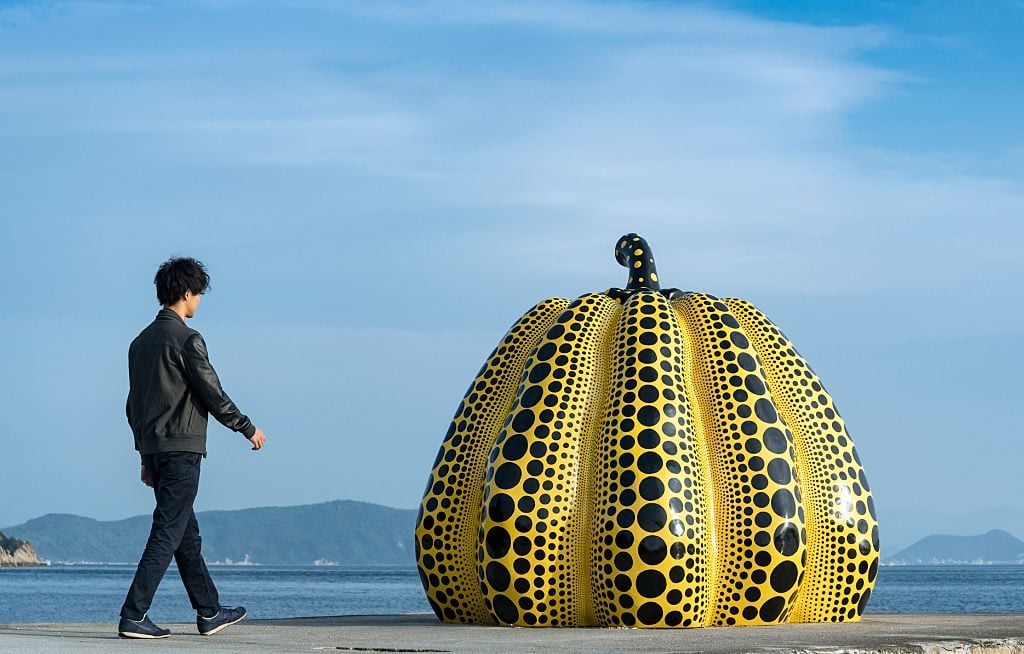
Yayoi Kusama’s Yellow Pumpkin (1994) in Naoshima, Japan. Photo by Education Images/UIG via Getty Images.
WHAT: This yellow pumpkin by the world famous Japanese artist has become the emblem of a remote island off the Japanese coast. Once just a sleepy fishing town, Naoshima was taken over in the 1980s as a site to display the Benesse art collection. Other works of contemporary art, installations, and architecture can be found dotted around the island, too. But it can get busy, and you might have to stand in a line for a while to get a clear view of the pumpkin.
WHERE: On the Island of Naoshima, Japan. You can reach the art-filled island in the Seto Sea off the southeast coast of Japan by ferry (it’s doable as a day trip from Hiroshima or Okayama) and you’ll find Kusama’s work after a short bus journey, perched at the end of a pier jutting into the Inland Sea.
FUN FACT: There’s a second Naoshima pumpkin—a red one—close to the ferry port.
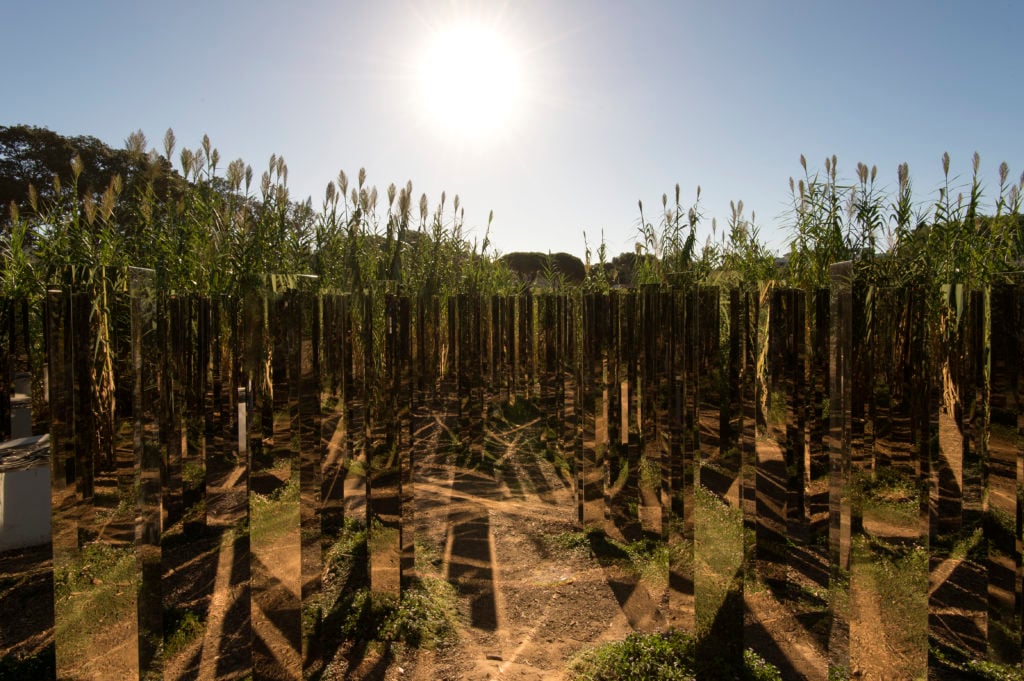
Jeppe Hein, Path of Emotions (2018). Courtesy Fondation Carmignac.
WHAT: This discombobulating maze by Danish artist Jeppe Hein is made from five curved lines of head-height mirrors, arranged in a round labyrinth meant to evoke the flowering yarrow plant that grows in the surrounding area. Once inside, visitors alternately disappear and reappear as they trek over the uneven topography of the land, experiencing the landscape from unusual perspectives.
WHERE: The sculptural installation is part of the collection of the Fondation Carmignac on the idyllic island of Porquerolles, which can be reached by a short boat trip from the coastal town of Hyères in France.
FUN FACT: In 2007, Hein co-founded the Karriere Bar in Copenhagen, featuring his work and those of many of his artist friends. Now closed, it is fondly remembered.
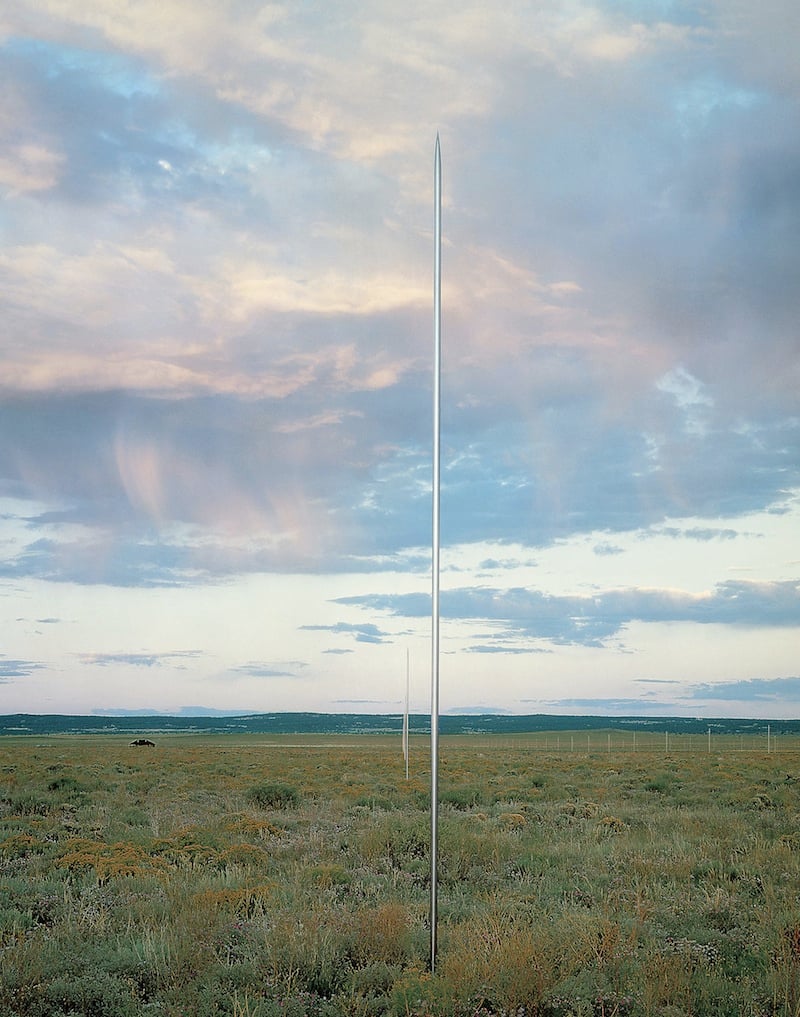
Walter De Maria, The Lightning Field (1977). Long-term installation in Western New Mexico. Photo: John Cliett. Copyright Dia Art Foundation.
WHAT: Walter De Maria planted 400 polished steel poles in a remote site in the high desert of western New Mexico to create his most famous work of Land Art. The Lightning Field forms a grid measuring one mile by one kilometer. Designed to be walked around, the magic hours are sunrise and sunset. Lightning storms are most frequent from mid-July through August, but the work is impressive in any weather condition. The poles vary in size from 12 feet to 27.5 feet and vary with the terrain, so that all of their spiked tops are level.
WHERE: Catron County, New Mexico. Remember to make arrangements! The Dia Art Foundation’s booking season runs from May 1 to October 31, during which you can make an overnight stay on the site in a cabin. The foundation provides transport from Quemado, which is around a three-hour drive from Albuquerque.
FUN FACT: De Maria was a jazz drummer in high school who went on to play in rock groups in New York, including one that evolved into the Velvet Underground.
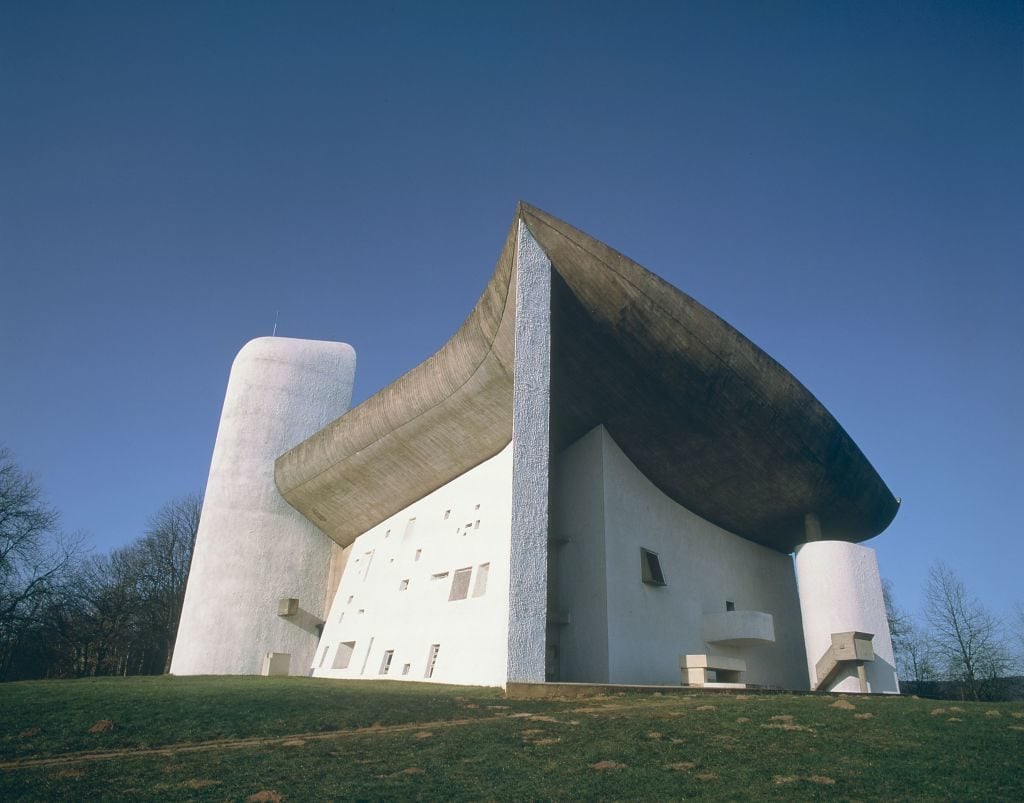
Le Corbusier, Notre Dame du Haut (1954). Photo: Jose-Fuste RAGA/Gamma-Rapho via Getty Images.
WHAT: The architect’s late masterpiece, this hilltop chapel in France resembles a piece of sculpture and has long been a place of pilgrimage for Roman Catholics. Admirers of Le Corbusier’s architecture now beat a path to his unique religious building, where one of the chapels inside is painted bright red and the sacristy violet. An external wall forms an outdoor altar overlooking the wooded landscape. It was commissioned by Father Couturier (1897–1954), a Dominican friar whose other projects included a chapel in Vence, in the South of France, with an interior designed by Matisse.
WHERE: Ronchamp is in the East of France. The chapel is a 15-minute walk up hill from the village. It is less than two hour’s drive from Basel across the border in Switzerland.
FUN FACT: The American musician and poet Patti Smith performed a concert at Notre Dame du Haut in 2017.
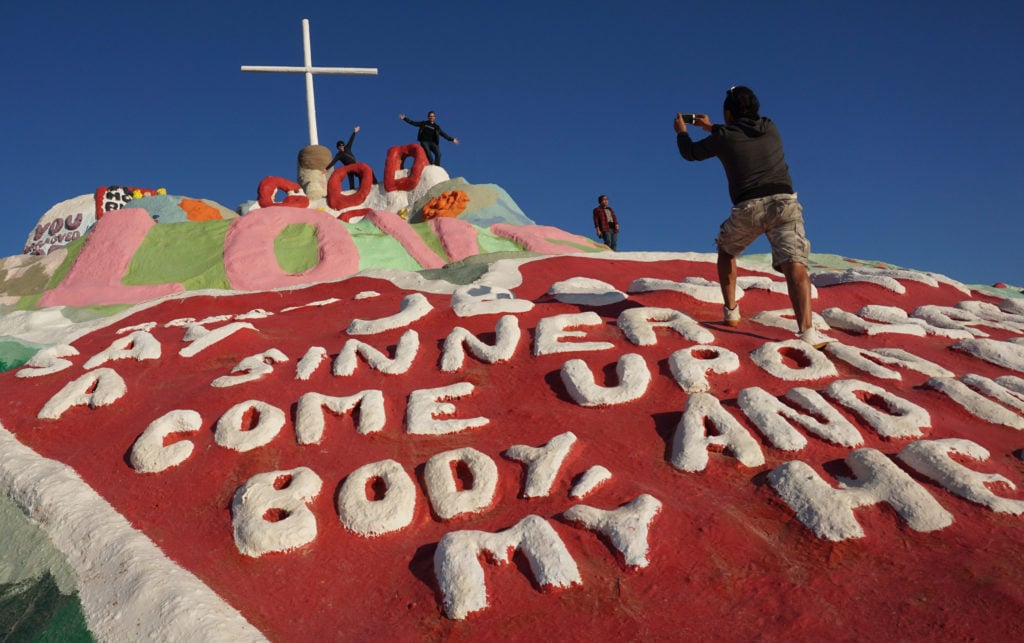
Leonard Knight, Salvation Mountain (1984–2011). Photo by Sandy Huffaker/Corbis/Getty Images.
WHAT: Leonard Knight (1931–2014) never called himself an artist, but he created an epic piece of multicolored land/folk art in the southern Californian desert. Called Salvation Mountain, it overlooks the Salton Sea, surrounded by vehicles he customized in the same visionary style. Every surface preaches Knight’s gospel of love and faith in Jesus in primary colors. When the first “mountain” he made collapsed, Knight decided it was God’s will, and he started all over again—only on a bigger scale. He did, however, abandon the idea of having a hot air balloon float above the site, as it proved impractical in the harsh desert climate.
WHERE: Salvation Mountain is next to Slab City, and a short drive from Bombay Beach, which boasts its own biennial and thriving art community. All are around a three-hour drive southwest from Los Angeles, and within easy reach of the Coachella Valley.
FUN FACT: The first Salvation Mountain, which Knight began in 1984, was made with unstable building methods and collapsed. So Knight changed locations and started again.
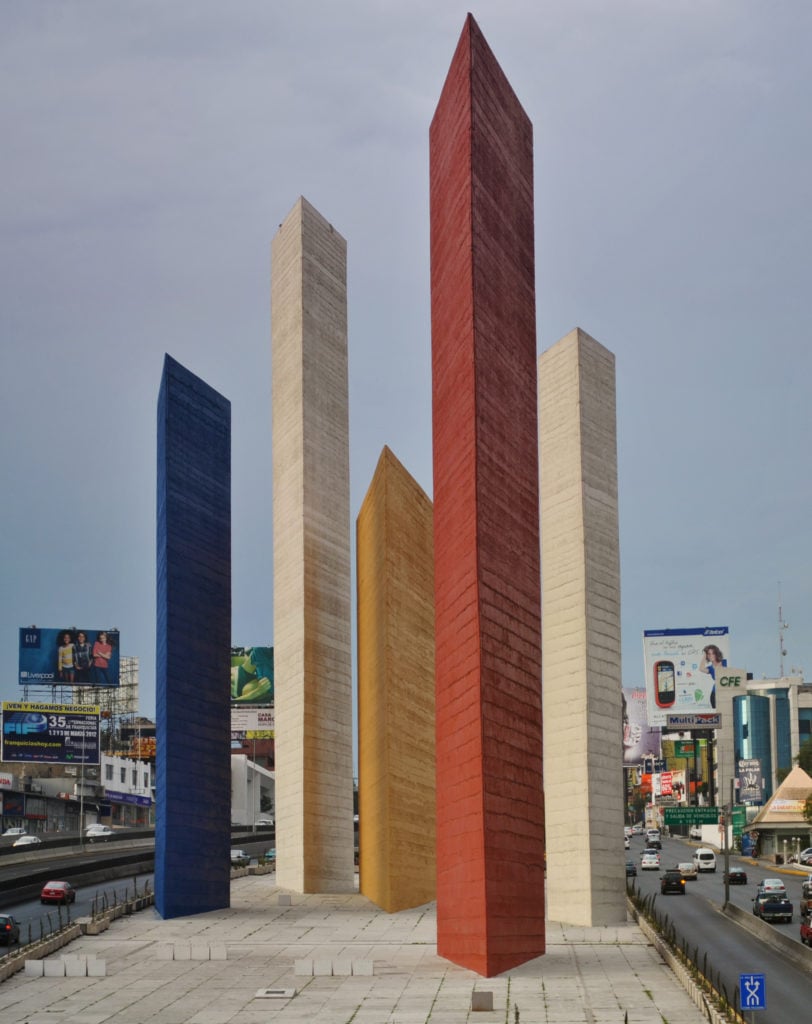
Louis Barragan, Mathias Goeritz, and Reyes Ferreira, Torres de Satélite(1958). Creative Commons.
WHAT: Five monumental towers in a suburb of Mexico City might not sound like something off-the-beaten track, but to get up close to the Torres de Satélite, you will need to cross five lanes of insane traffic on the Periferico, the mega-city’s main freeway. There were originally plans for seven towers, with one rising 200 meters, but the five completed triangular monoliths are impressive all the same, with the tallest standing 52 meters (170 feet) tall. The collaboration—by architect Louis Barragan, sculptor Mathias Goeritz, and painter Reyes Ferriera—is worth risking a cab or uber ride.
WHERE: The Mexican Modernist landmark is in the suburb of Ciudad Satélite Naucalpan, which is around 12 miles from the center of Mexico City. Just be prepared for gridlock on the way.
FUN FACT: Goeritz originally wanted to paint the towers different shades of orange, but was persuaded to opt for red, blue, yellow, and white.